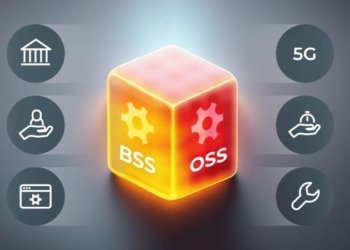The global Arduino-compatible market is expected to grow at a CAGR of 7.1%, reaching US$655.3 million by 2030, up from US$405.4 million in 2023. The market is driven by advancements in microcontroller technology, which enhance processing speeds, memory capacity, and energy efficiency. These improvements enable Arduino-compatible boards to support more complex tasks, making them suitable for a wider range of applications, including IoT, robotics, and automation. Additionally, enhanced connectivity options like Wi-Fi and Bluetooth, along with better integration with sensors and real-time task handling, further expand the capabilities of these boards for diverse projects.
𝐑𝐞𝐪𝐮𝐞𝐬𝐭 𝐟𝐨𝐫 𝐒𝐚𝐦𝐩𝐥𝐞: https://www.persistencemarketresearch.com/samples/33574
𝐊𝐞𝐲 𝐂𝐨𝐧𝐬𝐮𝐦𝐞𝐫 𝐓𝐫𝐞𝐧𝐝𝐬 𝐃𝐫𝐢𝐯𝐢𝐧𝐠 𝐆𝐫𝐨𝐰𝐭𝐡
The Europe Arduino-compatible market is experiencing significant growth as a result of evolving consumer preferences, technological advancements, and an increased focus on DIY electronics. The Arduino platform, which allows users to build open-source electronics projects, has expanded beyond hobbyists and is now attracting a broader range of users, including educators, makers, and professionals in various industries. This shift in demand is influencing the market dynamics, creating new opportunities for businesses and driving innovation across Europe.
In this article, we delve into the key consumer trends shaping the Arduino-compatible market in Europe, examining how these trends are fueling market growth and transforming the electronics landscape.
𝐑𝐢𝐬𝐢𝐧𝐠 𝐈𝐧𝐭𝐞𝐫𝐞𝐬𝐭 𝐢𝐧 𝐃𝐈𝐘 𝐄𝐥𝐞𝐜𝐭𝐫𝐨𝐧𝐢𝐜𝐬 𝐚𝐧𝐝 𝐈𝐧𝐧𝐨𝐯𝐚𝐭𝐢𝐨𝐧
One of the most notable consumer trends driving the growth of the Arduino-compatible market in Europe is the growing interest in DIY electronics and innovation. Over the past decade, the Arduino platform has gained massive popularity among hobbyists, students, and engineers due to its affordability, ease of use, and flexibility.
Arduino-compatible products, which are often open-source and modular, allow consumers to create everything from simple circuits to complex robotics and IoT devices. As more people engage with technology in a hands-on way, the demand for Arduino-compatible boards, sensors, and accessories is on the rise.
The rise of online maker communities, including forums, blogs, and YouTube channels dedicated to DIY projects, has played a significant role in encouraging consumers to explore the possibilities of Arduino-compatible platforms. This trend is not only fostering innovation but also empowering individuals to experiment and build their own electronic devices.
𝐒𝐡𝐢𝐟𝐭 𝐓𝐨𝐰𝐚𝐫𝐝𝐬 𝐄𝐝𝐮𝐜𝐚𝐭𝐢𝐨𝐧𝐚𝐥 𝐀𝐩𝐩𝐥𝐢𝐜𝐚𝐭𝐢𝐨𝐧𝐬
Education is another key driver of the Europe Arduino-compatible market. With a growing emphasis on STEM (science, technology, engineering, and mathematics) education, there is an increasing demand for affordable and accessible tools that can help students develop skills in programming, electronics, and problem-solving.
Arduino-compatible products are being used widely in educational settings, ranging from primary schools to universities. Educators value the platform’s simplicity, which allows students to get started quickly without needing advanced technical knowledge. Additionally, the availability of numerous online resources, tutorials, and project ideas makes it easier for educators to incorporate Arduino into their curricula.
In response to this trend, companies in the Arduino-compatible market are offering specialized kits tailored for educational purposes. These kits often come with pre-configured components, detailed instructions, and project guides to help students learn basic programming concepts and develop hands-on experience with electronics.
𝐆𝐫𝐨𝐰𝐭𝐡 𝐨𝐟 𝐌𝐚𝐤𝐞𝐫 𝐂𝐨𝐦𝐦𝐮𝐧𝐢𝐭𝐢𝐞𝐬 𝐚𝐧𝐝 𝐂𝐨𝐥𝐥𝐚𝐛𝐨𝐫𝐚𝐭𝐢𝐯𝐞 𝐏𝐫𝐨𝐣𝐞𝐜𝐭𝐬
The growth of maker communities and collaborative projects is another significant factor contributing to the rise of Arduino-compatible products in Europe. These communities, often composed of hobbyists, engineers, and entrepreneurs, are focused on creating new and innovative products by sharing ideas, knowledge, and resources.
In many cases, these communities are taking open-source principles to heart by collaborating on projects that push the boundaries of what is possible with Arduino-compatible technology. Makers are developing everything from sustainable energy solutions to advanced robotics, often working together through online platforms such as GitHub, Hackster.io, and Instructables.
The trend toward collaboration is also driving the development of new tools and accessories for Arduino-compatible products, further enhancing the appeal of the platform. As more people participate in these communities and contribute to open-source projects, the overall demand for Arduino-compatible products continues to grow.
𝐈𝐧𝐜𝐫𝐞𝐚𝐬𝐞𝐝 𝐃𝐞𝐦𝐚𝐧𝐝 𝐟𝐨𝐫 𝐈𝐧𝐭𝐞𝐫𝐧𝐞𝐭 𝐨𝐟 𝐓𝐡𝐢𝐧𝐠𝐬 (𝐈𝐨𝐓) 𝐀𝐩𝐩𝐥𝐢𝐜𝐚𝐭𝐢𝐨𝐧𝐬
The Internet of Things (IoT) is another area where Arduino-compatible products are gaining traction. As more businesses and individuals seek to create connected devices, Arduino-compatible boards and sensors offer an affordable and customizable solution for developing IoT projects.
From smart homes to industrial applications, Arduino boards are increasingly being used to create IoT solutions that enable remote monitoring, data collection, and automation. The flexibility of the Arduino platform makes it ideal for building prototypes, testing new ideas, and developing full-scale IoT systems.
In addition, the growing popularity of smart home technologies has driven demand for Arduino-compatible products. Consumers are using these platforms to build their own smart home devices, such as temperature controllers, security systems, and lighting automation solutions. This trend is expected to continue as the IoT market expands and more consumers embrace the idea of connecting everyday devices to the internet.
𝐂𝐨𝐧𝐬𝐮𝐦𝐞𝐫 𝐏𝐫𝐞𝐟𝐞𝐫𝐞𝐧𝐜𝐞𝐬 𝐟𝐨𝐫 𝐀𝐟𝐟𝐨𝐫𝐝𝐚𝐛𝐥𝐞 𝐚𝐧𝐝 𝐂𝐮𝐬𝐭𝐨𝐦𝐢𝐳𝐚𝐛𝐥𝐞 𝐏𝐫𝐨𝐝𝐮𝐜𝐭𝐬
Affordability and customization are key factors influencing consumer preferences in the Europe Arduino-compatible market. While the core Arduino boards are known for their low cost, many consumers are seeking products that offer even more flexibility in terms of customization and functionality.
As a result, manufacturers of Arduino-compatible products are offering a wide range of options that cater to different consumer needs. For example, some products come with enhanced features such as wireless connectivity, additional processing power, or specialized sensors for specific applications like environmental monitoring or healthcare.
This trend is also reflected in the growing popularity of Arduino-compatible accessories, including shields, modules, and expansion boards. These products allow users to extend the capabilities of their basic Arduino boards, enabling them to create more advanced and customized projects.
𝐒𝐮𝐬𝐭𝐚𝐢𝐧𝐚𝐛𝐢𝐥𝐢𝐭𝐲 𝐚𝐧𝐝 𝐆𝐫𝐞𝐞𝐧 𝐄𝐥𝐞𝐜𝐭𝐫𝐨𝐧𝐢𝐜𝐬
Sustainability is becoming an increasingly important consideration for consumers in the Arduino-compatible market. As environmental concerns continue to grow, consumers are seeking eco-friendly and energy-efficient solutions for their electronics projects.
Manufacturers are responding to this demand by developing products that prioritize sustainability, such as low-power boards and environmentally friendly materials. Additionally, the open-source nature of the Arduino platform encourages consumers to repurpose and recycle old electronics, contributing to the circular economy.
The rise of sustainable maker projects, such as solar-powered devices and energy-efficient IoT systems, is also contributing to the demand for Arduino-compatible products. By creating solutions that are both innovative and environmentally responsible, consumers are helping to shape the future of the electronics market in Europe.
𝐈𝐧𝐭𝐞𝐠𝐫𝐚𝐭𝐢𝐨𝐧 𝐨𝐟 𝐀𝐫𝐭𝐢𝐟𝐢𝐜𝐢𝐚𝐥 𝐈𝐧𝐭𝐞𝐥𝐥𝐢𝐠𝐞𝐧𝐜𝐞 𝐚𝐧𝐝 𝐌𝐚𝐜𝐡𝐢𝐧𝐞 𝐋𝐞𝐚𝐫𝐧𝐢𝐧𝐠
Another emerging trend in the Europe Arduino-compatible market is the integration of artificial intelligence (AI) and machine learning (ML) technologies. As these technologies become more accessible and affordable, consumers are beginning to explore ways to incorporate them into their Arduino projects.
AI and ML can be used to enhance the capabilities of Arduino boards, enabling them to perform more complex tasks such as image recognition, natural language processing, and predictive analytics. This integration is particularly appealing for advanced hobbyists and professionals working on projects in areas like robotics, autonomous vehicles, and smart cities.
The ability to incorporate AI and ML into Arduino projects opens up new possibilities for innovation, making it an exciting time for consumers looking to explore cutting-edge technologies.
𝐂𝐨𝐧𝐜𝐥𝐮𝐬𝐢𝐨𝐧: 𝐒𝐡𝐚𝐩𝐢𝐧𝐠 𝐭𝐡𝐞 𝐅𝐮𝐭𝐮𝐫𝐞 𝐨𝐟 𝐭𝐡𝐞 𝐀𝐫𝐝𝐮𝐢𝐧𝐨-𝐂𝐨𝐦𝐩𝐚𝐭𝐢𝐛𝐥𝐞 𝐌𝐚𝐫𝐤𝐞𝐭 𝐢𝐧 𝐄𝐮𝐫𝐨𝐩𝐞
The Europe Arduino-compatible market is evolving rapidly, driven by a combination of consumer trends, technological advancements, and a growing demand for DIY electronics, educational tools, IoT applications, and sustainability. As consumers continue to explore new ways to interact with technology, the market for Arduino-compatible products will continue to expand, offering new opportunities for makers, educators, and businesses alike.
By keeping an eye on these key consumer trends, companies in the Arduino-compatible market can position themselves for success and continue to drive innovation in the electronics industry. Whether you’re a hobbyist, educator, or professional, the future of the Arduino-compatible market in Europe promises to be an exciting one, full of possibilities for creativity, collaboration, and technological advancement.
𝐂𝐨𝐧𝐭𝐚𝐜𝐭 𝐔𝐬:
Persistence Market Research
G04 Golden Mile House, Clayponds Lane
Brentford, London, TW8 0GU UK
USA Phone: +1 646-878-6329
UK Phone: +44 203-837-5656
Email: sales@persistencemarketresearch.com
Web: https://www.persistencemarketresearch.com
𝐀𝐛𝐨𝐮𝐭 𝐏𝐞𝐫𝐬𝐢𝐬𝐭𝐞𝐧𝐜𝐞 𝐌𝐚𝐫𝐤𝐞𝐭 𝐑𝐞𝐬𝐞𝐚𝐫𝐜𝐡:
At Persistence Market Research, we specialize in creating research studies that serve as strategic tools for driving business growth. Established as a proprietary firm in 2012, we have evolved into a registered company in England and Wales in 2023 under the name Persistence Research & Consultancy Services Ltd. With a solid foundation, we have completed over 3600 custom and syndicate market research projects, and delivered more than 2700 projects for other leading market research companies’ clients.
Our approach combines traditional market research methods with modern tools to offer comprehensive research solutions. With a decade of experience, we pride ourselves on deriving actionable insights from data to help businesses stay ahead of the competition. Our client base spans multinational corporations, leading consulting firms, investment funds, and government departments. A significant portion of our sales comes from repeat clients, a testament to the value and trust we’ve built over the years.
This release was published on openPR.






















